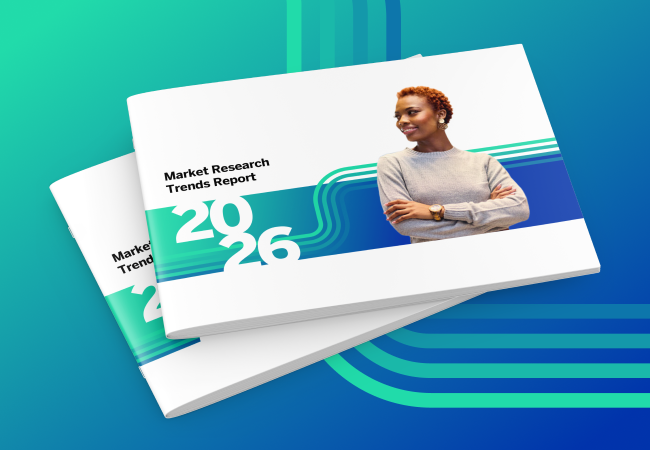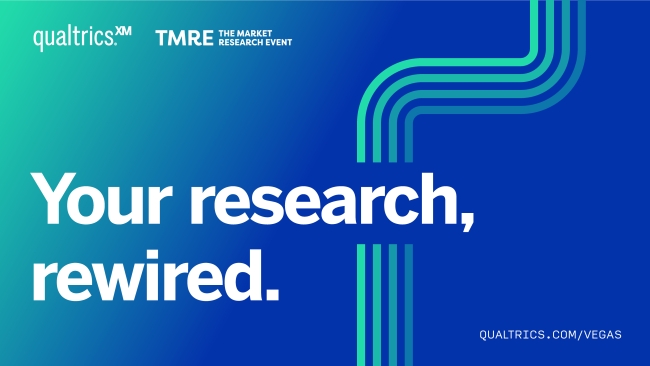The content below is based on sessions from the Qualtrics X4 2025 Summit, featuring leaders from Booking.com, Google, and Google Labs.
As AI rapidly transforms strategy and research by equipping teams with a richer understanding of their customers, there’s a bit of a paradox at work. AI itself is, well, artificial. Yet the effect it’s having on organizations and research teams is close to the opposite: thanks to AI insights, companies have a better understanding of how their customers are thinking and feeling, and as a result they are able to interact in ways that feel more timely, organic and empathetic. AI is equipping brands to act more human—and to better understand and connect with their customers in the process.
One of the best ways to think about how your company might scale up the use of AI in research is to look at how others are doing it. And already there are lots of success stories—companies experimenting with synthetic data and other AI-innovations as part of their research toolkit with inspiring results. They’re identifying previously hidden gaps and opportunities. They’re benefiting from a more timely and complete understanding of their customers. And they’re accessing greater insights that deliver a genuine competitive advantage. You could be next. Let’s check out a few examples and see if any of them strike a chord as a potential use case for your organization.
Using AI to drill down: Booking.com gains clarity and certainty on subtopics, subgroups
Booking.com’s annual Travel Trends survey provides the company with a trove of insights that enable Booking to better understand and anticipate emerging trends in travel preferences, as well as shifts in traveler behavior. But when it comes to studying market subsets, even that industry-leading survey doesn’t always provide the clarity that Booking needs in order to be confident in its findings. Traditionally, researchers facing this challenge have two paths available.
The first is to add questions to the survey, which carries the risk of depressing the quality of responses as participants grow tired of answering.
The second is to add thousands more consumers to the process, which is both time-consuming and expensive. Enter Qualtrics Edge Audiences, which uses advanced AI models to simulate consumer behavior and preference data.
The research panel solution produces synthetic data to generate predictive insights that can be tailored to specific demographics and customer profiles. The Booking.com teams used Edge Audiences to drill down and study harder-to-reach subgroups and subtopics that the core Travel Trends responses didn’t fully illuminate, and it did so without having to enlarge the survey or expand the group of respondents.
The true value of synthetic data isn’t just in replicating what we’re already doing with human panels. It’s about going deeper, because we have a lot of new opportunities here. So that’s exactly what we did. - Eline Metske, Senior Researcher, Booking.com
The result? When Booking compared the synthetic responses to those of the survey’s human participants, in many cases the synthetic data aligned with the human responses, validating hypotheses from the organic responses and giving the team greater confidence in the conclusions it was drawing from subgroups. In other cases—often those connected to attitudinal and preference-based questions—the synthetic responses didn’t just confirm but also meaningfully extended the value of the organic ones.
For example, synthetic responses uncovered a nuance hidden within the Travel Trends survey’s depiction of “solo travel,” based on a distinction between traveling alone en route to meet up with others versus a true solo trip. After noting a gap between human and synthetic responses about solo travel, Booking.com’s research team re-examined the human responses and discovered that about half of the human respondents misinterpreted the question. Its insight into the habits and preferences of solo travelers grew as a result. Learn how your company can benefit from scaling up AI-powered research with synthetic responses
Using AI for discreet research: Google Labs uses synthetic audiences to protect brand credibility
Qualtrics conducted another Edge Audiences pilot project with Google Labs, a unit within Google that experiments with AI. Even the Google Labs team of AI experts is challenged to integrate AI into their research processes in ways that maximize the value of human contribution and insight. The Google Labs team used Edge Audiences to test the performance of an AI application in development.
Lean on AI to upscale, not replace human contributions. — Chelsey Fleming, UX Research Lead, Google Labs
Specifically, Google Labs was concerned that user prompts might lead a generative AI application to create problematic images. It could have used human panels for testing, but if the results were indeed problematic, the testing process itself could have harmed Google’s brand. Instead, by using Qualtrics’s synthetic Edge Audiences, Google was able to test a sensitive topic without involving human participants, and to ensure that the outputs from the AI model fit within the team’s desired parameters—without risking unwanted brand exposure.
The project demonstrated the value of synthetic data for pilot testing, revising, and modifying question language to produce a stronger research instrument quickly and with little cost.
Using AI to drive product improvements based on research insights
Our last example shows how a company used AI to improve a product in response to a research insight, rather than to generate the insight itself. When Google noticed a significant drop in the frequency with which commercial and product-related searches on its platform led to sales, its research team investigated the reasons driving the changes in user behavior.
Google researchers turned to Qualtrics to study those behavioral shifts and made a key discovery: People continued to use Google at the beginning of their commercial search journeys but were then shifting to more specialized channels that often offered detailed product comparisons. Based on that insight, Google knew it had to update its commercial search experience to better compete with its specialized rivals, specifically by adding features that help customers with their decision-making processes.
This was a product pivot that we made and insights [helped direct.] ... The key user need on these journeys is, 'Hey, help me make a decision. Don't give me the answer. Give me the information to make the decision.' — Santhosh Srinivasan, Insights UX Research Manager, Google
One of the key changes was to add AI-powered product comparisons, based on the options that appealed to prior users who pursued similar commercial-search journeys. By using AI to present viable options and equip customers with the criteria they need to make an educated buying decision, Google successfully revitalized its commercial search tool.
AI is transforming the way we do research
From accelerating the speed to insight to elevating timely decision-making, AI is helping organizations sustain brand credibility, and so much more. It’s expanding the scope and specificity of insight, and enabling research teams to scale up their contributions across multiple workstreams, including marketing and product development. It’s making teams and organizations more nimble and adaptive, and facilitating cross-functional collaboration and insight.
AI-powered research is revolutionizing research strategy and becoming an essential tool for staying ahead in a rapidly evolving landscape.
Synthetic responses 101: Learn how your company can benefit from scaling up AI-powered research



